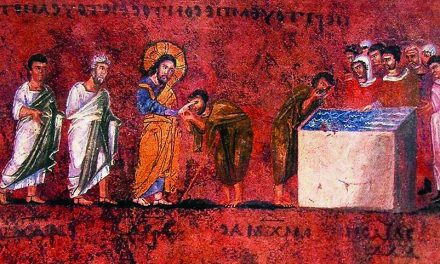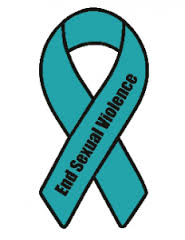St. John XXIII fathered the Catholic world in which I grew up. Had there been no John XXIII, I suppose my Mass might still have been in Latin, my grade-school sisters in habits, and my lessons filled with the terrors of mortal sins and the dangers posed by associating with Protestants. It’s a counterfactual, so who really knows? It’s easy to stereotype (nostalgically or critically) “the pre-Vatican-II” church. All I know from my own experience is that John XXIII meant that I can never remember a time when somehow faith seemed like a museum piece, separate from life. Faith and life flowed together, in ways sometimes messy, sometimes deeply fruitful. I am grateful for that. I came to know John XXIII himself only in college, through stumbling across Peter Hebblethwaite’s biography. It was absorbing reading, the picture of the unlikely, kindly pope who surprised everyone and changed Catholicism. I later read the collection of “Xavier Rynne’s” columns from the Council itself, relishing how energetically and ingeniously the Church had made this huge step forward. And I read Pacem in Terris, a powerful, sweeping document that urged peace as a central mark of my college Catholic practice. Together with discovering Thomas Merton and Dorothy Day, I saw my Catholicism as this boundless, hopeful, challenging vision for the world.
My subsequent education happily demonstrated that Vatican II was not (and could not have been) a one-man show, as if it was the pope against everyone else. A couple generations of quiet innovation and careful (often ecclesially dangerous) work had gone on that made the Council’s achievements possible. But without John, there would have been no opportunity. John XXIII understood what many, then and now, do not quite get: the Church does not need to be paralyzed with fear, anxiety, and defensiveness. The Gospel is one of joy. As is fitting in this season of resurrection, we can embrace as John did the greeting of the Risen Christ: “Do not be afraid.”
“Do not be afraid” was also the signature of another pope, one of those aforementioned innovators that made the Council possible. If John made the world of my youth, John Paul was undoubtedly its leader. I discovered John in books, but John Paul was a constant presence in life. When I was just hitting 7 years old, news was the pope was coming to my hometown. Growing up in a Chicago neighborhood with a huge Polish population, a year after the election of this first Polish pope, my grade school geared up. I can still remember posting large letters in all the school windows that spelled out a greeting to the pope – if I remember correctly, his motorcade was scheduled to drive past our school on the way downtown. I thought this was pretty neat. But then again, I didn’t quite get it. Big names came to Chicago all the time.
What I didn’t realize as a 7-year-old was that popes were not just big names. They weren’t VIP’s or world leaders who traveled all over the globe. At least, they weren’t before Karol Wojtyla was elevated to the See of Peter. I still have to communicate to my students what a huge deal it was when Pope Paul VI, during Vatican II, went to visit the Orthodox Patriarch and then went on a pilgrimage to Jerusalem. Before that, popes didn’t leave Rome. But St. John Paul II shattered that idea – as he did so many others. He was an innovator in service of tradition.
The achievements of John Paul II’s lengthy papacy are too numerous to summarize. From my professional side as a moral theologian, the pope’s impact was substantial. Three strikingly powerful social encyclicals, including the much-neglected Laborem Exercens, an encyclical on the theological importance of work that should receive far more attention than it does. The first-ever encyclical specifically on moral theology, the complex and still controversial Veritatis Splendor, which came out in 1993, and set the tone for the professional moral theology discussion I entered a few years later in graduate school. His innovative audiences later collected as “the theology of the body,” providing a positive ethic of sacred sexuality for a tradition often suspicious of it. And the definitive document of the “consistent ethic of life,” Evangelium Vitae, that built a magnificent case for life from conception to natural death, even for the worst of criminals.
But if someone were to ask me to name what makes John Paul a saint in my mind, I would probably not name all these documents. Instead, I would turn to some of the boldest gestures of his papacy. His insistence on traveling the world to meet and inspire Catholics by the millions. His canonization of 482 saints –more than had been canonized by any other pope – that were meant to represent specifically the holy men and women of every culture in the expanding world church. His remarkable gestures of solidarity with other Christians, members of other faith traditions, and especially our Jewish brothers and sisters. And finally, his dramatic “apologies” on the eve of the millennium for the church’s failures and sins of the past – a communal “confession” which left the details of theology in the dust in favor of the urgency of trusting in God’s boundless mercy. These are the reasons why, whatever “side” one took in the battles over church politics, John Paul was beloved, consistently gaining favorable ratings from over 90% of Catholics throughout his papacy.
Given the length of his service, we are perhaps more acutely aware of the man’s failures as well as his successes. One can only wonder what John XXIII would have done if he had had to lead the Church through the 1970’s. One can only wonder what our image of John Paul II would have been had the assassin’s bullet ended his life as a martyr. My experience as a young person and as a lay theologian meant that I largely saw John Paul II from “the outside,” on the stage or in the documents. But by all reports, like all saints, John Paul’s weaknesses were there. No doubt his charismatic leadership style worked best on the broad stage, but did not always lead to the best management practices. The constant drip-drip of clergy sexual abuse is no doubt the most notorious example. The personal bravery of John Paul’s later years of publicly suffering through frailty and decline might lead us to pause and reflect whether a courageous head-on confrontation with this scandal would have been an analogously-brave public ecclesial suffering.
But the point of canonization is not to declare someone perfect. It is to declare them worthy models of holiness. And no doubt he changed the world, as I grew up. When I was 7, this new pope made his way to Chicago. In 2005, when I was 33, I was leading a group of students on a weekend field trip to Christian communities in Chicago when news of the pope’s death broke. After attending Sunday mass at Holy Name Cathedral, we drove to our last stop, the Sunday service at an inter-racial Evangelical Protestant community in the midst of the dire poverty of Chicago’s West Side. The church, led by a former football coach, Wayne Gordon (still called “Coach”), was a beacon of light in that community, and my Catholic students were wowed by the music, clapping, and general exuberance of the worship. But imagine my surprise when “Coach” began his sermon with a lengthy, heartfelt tribute to John Paul II. I knew in past ages, evangelical Protestant communities might have seen the pope as antichrist, and seen Catholics as “barely” true Christians (at best). Now here I was, at this bible-thumping place, and they were offering a stirring eulogy for the holiness of the pope at his passing. That’s my lasting memory and symbol for how this man truly did change the world.
Whenever I look back on the history of the Church and see some of the shameful men who sat in Peter’s Chair, I feel blessed to live in an age where popes shine with holiness. And it is fitting, too, that Pope Francis is presiding over this. The glow of holiness is, in the end, what matters. And it would difficult to argue with the committed holiness of any of these leaders. In their different ways – and all together – let them inspire us in our commitment to the Gospel.
A version of this commentary was originally posted on the homepage of Mount St. Mary’s University.




